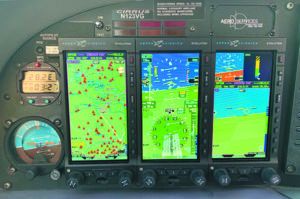GLIDER ADD-ON RATINGS
I enjoyed Rick Durden’s article on earning the glider add-on rating in the May 2021 issue of Aviation Consumer. I finally earned my ticket to soar a couple of years ago, but not without some frustration.
While it was we’ll worth the effort (I know I’m a better powered-aircraft pilot because of it), there are some things that prospective students should consider when choosing a school or club to train. First, what is the age of the equipment—including the condition of the tow planes? My club only had one tow plane and it was down for maintenance more than it was in service to tow. That stretched out my training for far longer than I expected.
The other thing is the condition of the gliders. Some clubs operate on very tight budgets and like powered aircraft, may not be we’ll maintained. More than one old glider in the fleet was questionable. If you’re serious about continuing to soar once you get the rating, consider buying one of your own to train in. Might you guys do an article on entry-level gliders? Keep up the great work—I love your magazine!
Roger Radcliff – via email
All good points. We’ve heard (and experienced) all that before. Like any training plan, definitely consider the dispatch reliability of the training fleet and in the case of soaring, pick an operation that has more than one tow plane and several gliders. We’ll add entry-level gliders to the coverage list.
ASPEN BACKUP QUESTION

I’ve flown behind a two-screen Aspen suite (PFD/MFD combo) for years now, and love them. I also upgraded the early-gen displays to the newer Max versions that Aviation Consumer has covered. I’ve gone through some updating travails with some software glitches during that upgrade. My primary PFD has the synthetic vision and the AOA unlock. But my question relates to required backup instruments.
My second-screen MFD has full reversion so that the MFD can function as a PFD, but my MFD has the old external battery backup. It is my understanding now that new kit part number 913-00001-021 (with a 30-minute battery) for the EFD1000 Max negates the need for that big ungainly and difficult-to-install external battery. I’d like confirmation on this. Do I still have to retain the old external battery to go without a secondary external attitude indicator?
This isn’t very clear, and unless the diagrams in the install manual have been updated, I’m wondering if the STC provisions still remain as is. I don’t think the old external battery replacement is even available, and the instructions for continued airworthiness seem to state that they need to be replaced incrementally even if they are healthy.
Last, another issue is the compatibility for ADS-B traffic (and those weather METAR flags) display. I have a Garmin GTX 345R ADS-B transponder that doesn’t seem to be compatible (I currently show traffic and weather on my Garmin GTN 750Xi and GMX 200 displays, so not sure I even want it, but it’s good for others to know). I wish Aspen great success with its new corporate ownership, and hope they continue to support these units.
Marc Wiese – via email
For Aspen to display Garmin’s GTX 345 ADS-B data, you need the $595 Garmin ADS-B unlock. But, Aspen warns there may be a compatibility conflict if the GMX 200 display is using the sole RS422 output from the GTX 345, so check the configuration.
For the 2000 and 2500 Max displays, the EBB-58 battery is no longer available. Aspen says the new Max displays have new batteries that last longer than the original internal batteries.


